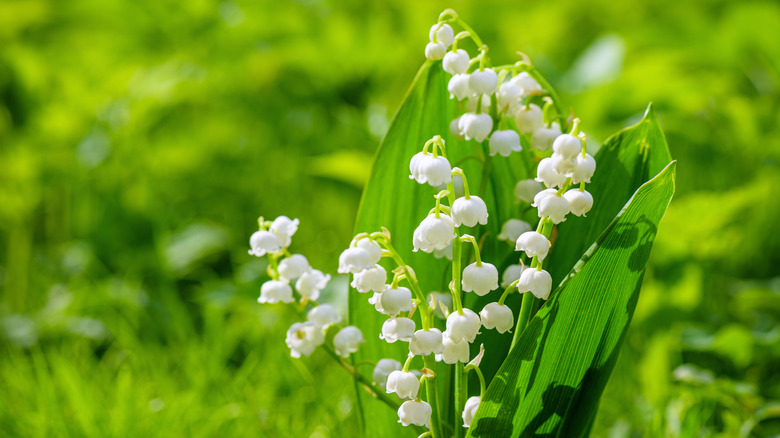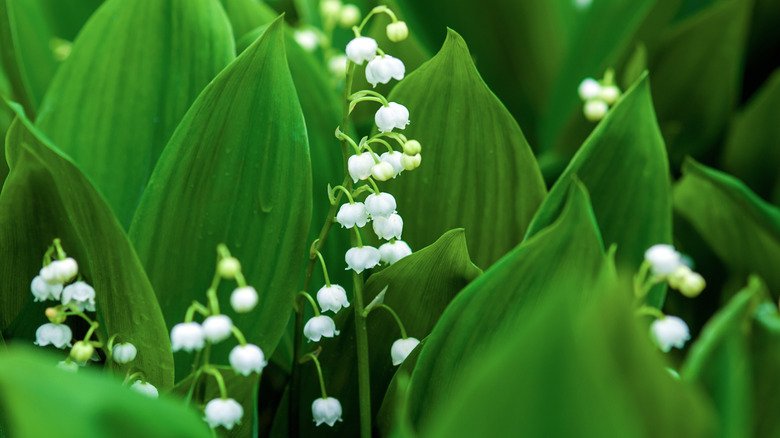Is It Dangerous To Touch Lily Of The Valley?
The dainty, beautiful look of the lily of the valley is a sly way the flower conceals hidden dangers. Despite its name, these flowers aren't a member of the lily family at all and are instead more closely related to asparagus. However, these stunning florals shouldn't be served alongside your steak dinner anytime soon.
Lily of the valley flowers usually grow between 6 to 12 inches tall and appear around late spring. They're quick spreaders, making them a great choice for decorative ground cover, and their ability to take over once the weather begins to heat up has led to long-held cultural associations with the beginning of summer. Combine this with their beautiful, bell-shaped blooms, and you have a recipe for a plant that's popular both in gardens and as an inclusion in decorative vases. Incorporating these florals into your garden is possible, but it's necessary to err on the side of caution thanks to the toxicity that hides behind these innocent-looking blooms.
How to handle lily of the valley
Every part of the lily of the valley plant, from root to bloom, is toxic when consumed, but luckily, the dangers decrease when it comes to handling. With that being said, it's still important for gardeners to be mindful and protect themselves. Contact with lily of the valley plants, especially the bulbs, can cause skin irritation like rashes, blisters, swelling, and bumps in some people.
Because of this, it's best to wear gloves and full-coverage clothing when handling this plant. The irritation isn't deadly and will likely fade in a few hours, but it can be uncomfortable, especially if you have sensitive skin. Overall, it's a good idea to avoid direct contact as much as possible, even choosing an alternative option if you have young children or pets that play outside. Irritation is easy to treat, but ingesting even a small amount of this plant can lead to major medical problems and even death.
Signs and symptoms of lily of the valley poisioning
When consumed, lily of the valley is classified as extremely toxic, so if you notice any of these signs or symptoms after you, your child, or your pet could have accidentally ingested any part of the plant, call poison control and head to the hospital or emergency room right away. The main and most dangerous characteristic of lily of the valley's toxicity is its ability to affect the heart. It can slow its beating and cause fainting, dizziness, and irregular heartbeat.
Additional symptoms to look out for include blurry vision, drowsiness, stomach pain, vomiting, and a sudden onset of weakness. Most poisoning cases are a result of curious children wanting to try the small berries that grow on the plant and pop up around late fall, but it's important to remember that all parts of the plant are toxic. Thankfully, with proper treatment, cases of lily of the valley poisoning are rarely fatal, but it's incredibly important to seek medical care as soon as possible.


